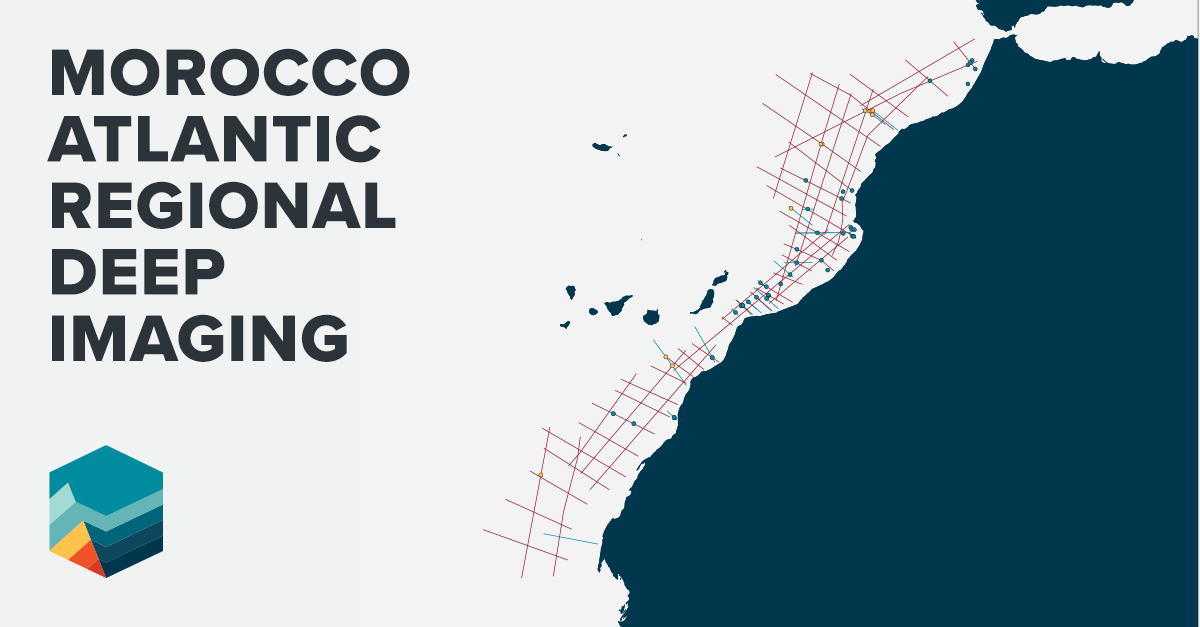On-Trend Exploration in Morocco – Finding Synergies with Namibia
01 May 2025West Africa has become a focus for exploration following the discovery of significant quantities of hydrocarbons within the Namibia offshore. Another such area that has similarities to this margin is Morocco where the typical rift-to-drift tectonostratigraphy for the West African margin can be observed.
Geoex MCG’s regional 2D seismic data has revealed promising prospects, suggesting that a Jurassic source rock may be the key to unlocking significant hydrocarbon volumes in this region.
The exploration focus has recently been on the Namibian offshore following successful campaigns by TotalEnergies, Shell, and Rhino Resources. Large quantities of hydrocarbons have been found in these exploration settings on Oceanic Crust, utilising counter regional dips associated with sediments collating in these locations. As is typical when significant volumes are found, the conjugate margin is often immediately investigated. Similarities between these margins is often found and currently exploration is occurring in Uruguay that could lead to further exploration success.
Whilst the exploration is following the expected trends, these discoveries have opened the door for further exploration in areas that have potential synergies with the discovery, albeit in different geographic locations. Passive margins therefore need to be evaluated with a new lens to understand the likelihood of similar discoveries.
One such location is Morocco which has a typical rift-to-drift tectono-stratigraphy for the West African Margin. Here, there is a significant number of blocks that traverse the continental-oceanic crust boundary and as a result, “Namibia-type” discoveries may exist with a similar counter regional dip profile. This is certainly the hope for ExxonMobil who have recently taken acreage in the distal regime to the North of Morocco.
Currently, the focus of the exploration plays in Morocco have invoked a Cretaceous source rock. Unfortunately, numerous wells have tried, and subsequently been unable to discover the hydrocarbons expected within the subsurface.
Geoex MCG have postulated that a Jurassic source rock is a more likely charge for potential prospects. This has been interpreted using our regional 2D seismic data that shows a regional unconformity across the entire margin from Northern Morocco to the South. The amount of sediment that has subsequently been eroded as a result of this unconformity has been estimated by completing the Vitrinite Reflectance and Apatite Fission Track Analysis that was conducted on wells tied to our survey. This has been shown to be significant in the petroleum understanding of this margin.
For more information and data viewing, please contact Jean-Philippe Rossi.
